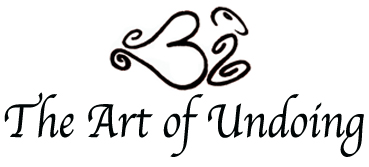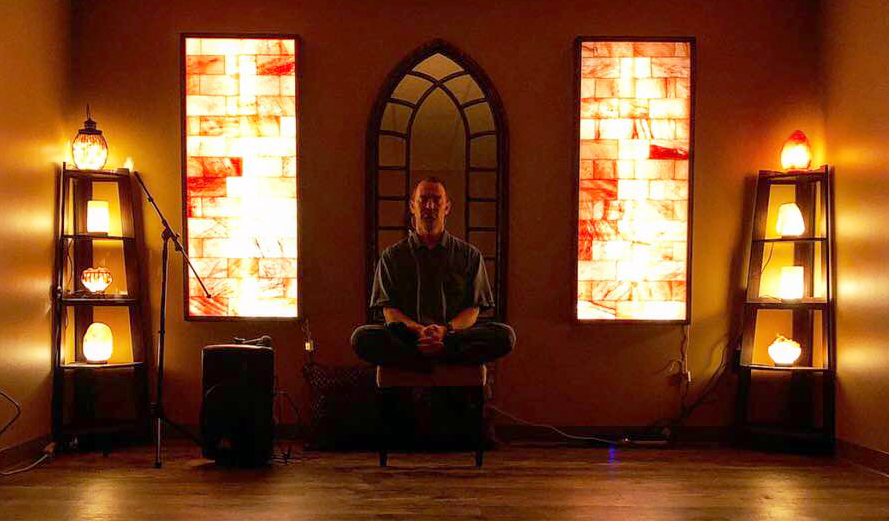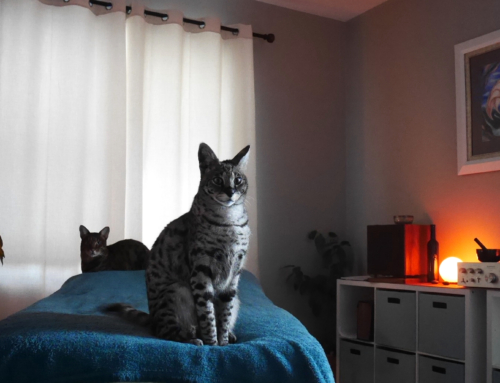Meditation is an ancient art that we have all heard about. It’s benefits are profound and far reaching and we all know we should be meditating regularly. Many of us find it difficult and so we make excuses and avoid it. This guide will help you to keep your mediation practice simple and effective.
1 Sit up straight in a comfortable posture. It helps keep you alert and focussed and allows a natural, easy breath. Stay relaxed and balanced so no strain will distract you. The bones of the head, neck and spine should be stacked on top of each other and your muscles at ease. Be aware that our weight should be supported on the front of our spine, not the back.
2 Choose a point of focus to absorb your attention; an inspiring word or phrase (mantra), gentle breath or inner sound will work well. Concentrating on the point between the eyebrows helps with focus, awake alertness and rising above daily concerns. When attention wanders gently bring it back to your chosen object of concentration.
3 Be happy and optimistic. Make your meditation practice something to enjoy and look forward to rather than a chore to be endured. It will be easier and more beneficial.
4 Keep it simple. Complicated techniques and ideas can stimulate the analytical part of the mind and cause distraction.
5 Surrender totally to the present moment and everything it contains. Resistance leads to friction and dissatisfaction. A busy mind doesn’t mean we can’t meditate, it means we need to meditate. Meditation practice can be as much the process of learning how to experience peace as the experience of peace itself.
6 Maintain a sense of joyful expectation. Be aware that inner peace and contentment are always present like the clear sky above stormy clouds, not something to be attained in the future. Balance this with a sense of having no goal or agenda. Sitting quietly with ourself IS the practice of meditation regardless of how we feel at the time. Be unattached to the outcome, there is no such thing as a bad meditation.
7 Focus on positive, affirming ideas. Say ‘I AM calm and at peace’ rather than ‘I must stop thinking and stressing’.
8 Several short and refreshing sessions throughout the day can be far more rewarding than one long stale session that leaves us tired or frustrated. 10-20 minutes is enough to begin with, it will grow naturally as we come to enjoy the benefits more and more.
9 Keep a regular schedule. First thing upon waking and last thing before bed are the best times to meditate, ideally at the same time each day.
10 When inner peace is present let go of the technique and bathe in the healing silence. A sculptor who does not know when to stop just ends up with a pile of rubble
11 Enjoy the silence and sense of relief that follows. Practising technique alone is like a hungry chef who cooks a dish but never eats it.
Practise these steps every day for 2 weeks and you WILL notice a significant improvement in your sense of wellbeing. Meditation is not about achieving or gaining anything, it is the simple practice of withdrawing our attention away from distractions and busyness and being fully present with our true nature, a deep inner peace that calms, heals, guides and inspires. Do yourself a favour and begin right here and now.
To download this guide as a PDF, click HERE to open in a new window then click the download button at the top right of your screen.







Leave A Comment
You must be logged in to post a comment.